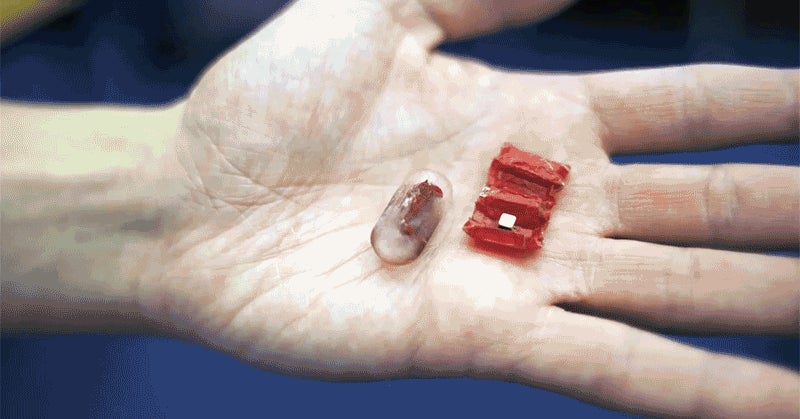See what Scientists at MIT want you to do if you swallow something
According to MIT, Americans swallow over 3,500 button-sized batteries every year. Say what? But instead of educating the public about not swallowing random crap, researchers at the school want people to swallow a new folding origami robot they’ve developed that’s designed to retrieve foreign objects, among other tasks.
The tiny robot, which is a generous description, was actually co-developed by researchers at MIT, the University of Sheffield, and the Tokyo Institute of Technology. Its accordion-like design, perfected mostly through trial and error experimentation, uses something called “stick-slip” motion to get around. Tiny appendages stick to a surface giving it the friction and traction it needs to move forward, but release their grip when the tiny robot moves and changes its weight distribution.
But since this particularly origami robot is designed to function inside the human body, which is made mostly of water, it’s also been augmented with tiny fins to help propel it along like flippers.


No comments:
Post a Comment